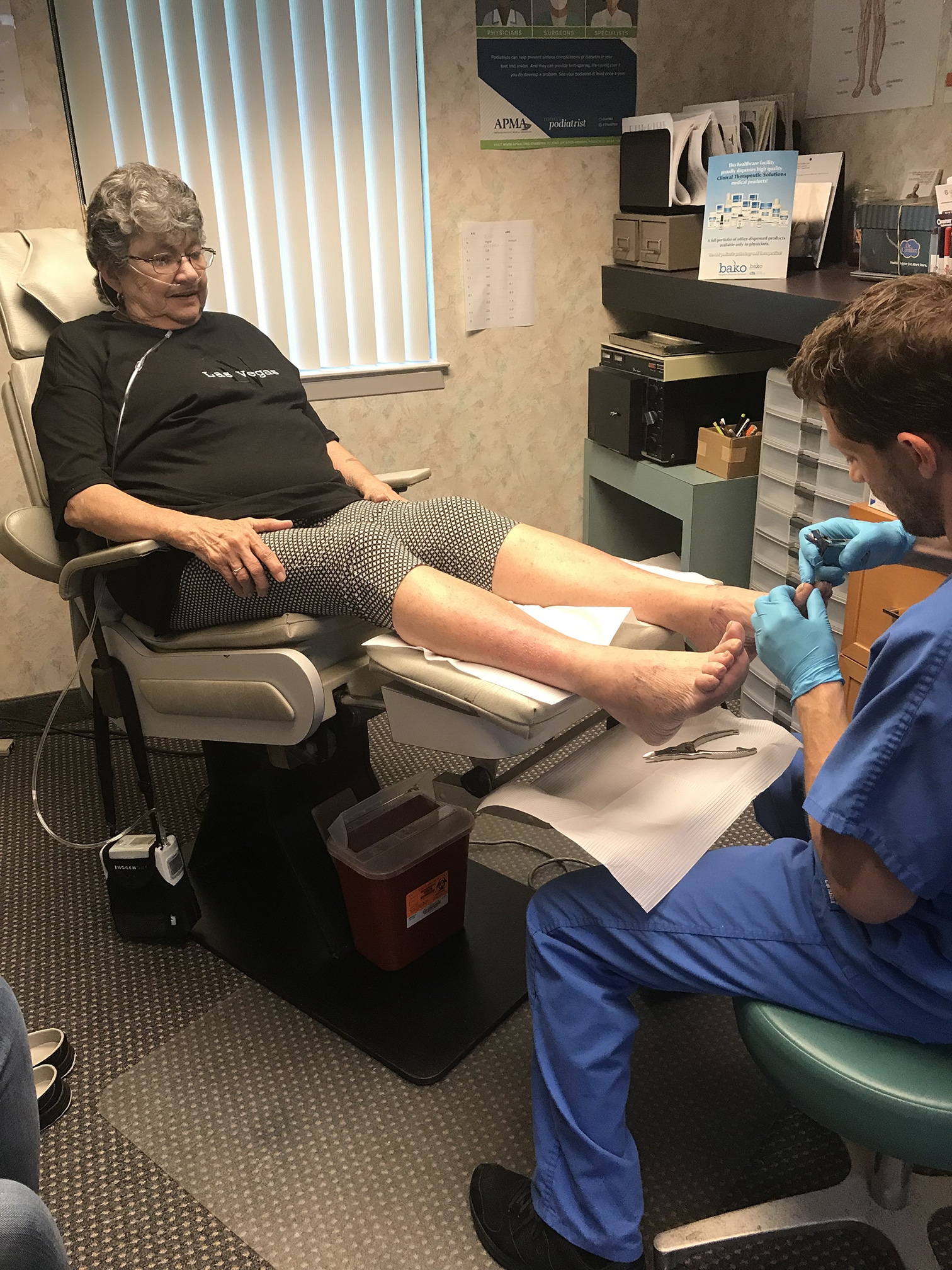Geriatric Foot Care
Proper foot care is essential for our older population. “Older,” geriatric, or aging population generally refers to people age 70 and older, although many people do not require geriatric care until around age 80. By this age, the average person logs well over 100,000 miles on their feet! Our bodies are very durable and have unique repairitive abilities at the molecular level; however wear-and-tear from long term use eventually compromises foot health and foot function of the aging foot. Generally, there are three main categories every geriatric patient will fall under.
First, is normal. This broad category is reserved for older people that do not require oral therapy for coagulation/clotting status (ie blood thinners), do not have peripheral neuropathy (nerve dysfunction and lack of sensation in legs, ankle or feet) and are otherwise free of problematic skin lesions or calluses and have little to no complaints with foot deformities, loss of hair or irregular temperatures or colors of the legs, ankles and feet. The second category is the older diabetic. Diabetes can be a devastating and life changing disease. These people must be seen by a foot specialist for optimal foot health and function on a routine basis. Lastly, the third category is the older population requiring oral therapy for anticoagulation. Similar to the older diabetic, anyone on oral anticoagulants should be seen by a foot specialist on a regular bases for optimal foot health and function.
When discussing foot health and function of our older population, there are certain topics that relate to geriatrics simply due to age. These topics include and are not limited to: skin, nails, vascular (arteries and veins), nerves, and other comorbidities, which include osteo-arthritis, rhuematoid arthritis, drop foot, etc.
It is very common for elderly people to have vascular problems, as this progresses with age. People may experience swelling in the feet, ankles and legs, which may be due to venous circulation problems, hormonal changes, heart disease, pulmonary hypertension, medication, diet and reduced activity. Other vascular complications may be a cold leg, ankle or foot. This may be a sign of arterial dysfunction, or problems with blood supplying the lower extremity. Skin problems include ulcerations and wounds (requiring more urgent evaluation), painful calluses, warts, fissured skin, fungal skin, psoriatic skin and much more. Nail problems are one of the most common geriatric foot complaint, as nails become thick and discolored. Ingrown nails can lead to severe pain and possible infection if not treated properly.

Neurologic problems of the lower extremity are very important to diagnose and treat; neuropathy is the loss of feeling and loss of sensation to feet, ankle and legs. Neuropathy usually starts at the toes and works its way towards the body. Lifestyle modifications and oral therapy may be indicated for those with neuropathy. Impaired balance is another common geriatric problem that is treated at Foot and Ankle Care of South Jersey. Every attempt must be made to prevent falling in every age group, not just the elderly. Properly fitting, well supportive, shoes are important in keeping the geriatric foot healthy. Bringing your current shoes in for evaluation is also important as this is an indicator of gait pattern and possible deformity.
Maintaining feet properly becomes difficult as we get older. Proper foot care can lead to an increase in the general health of the feet, ankle and legs. Inspection of feet on a daily basis will also help to reduce problems. If you notice any of the above signs, schedule an appointment with Foot and Ankle Care of South Jersey for diagnosis and customized treatment plan.
